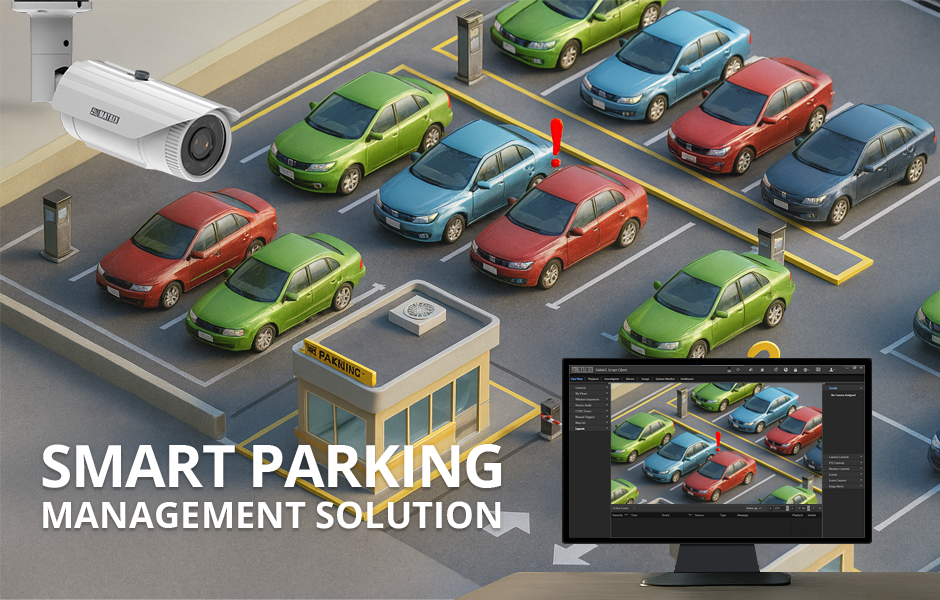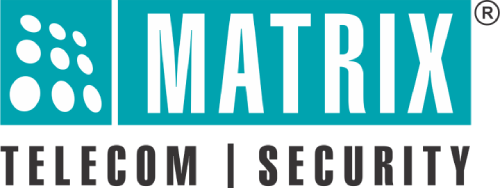
Ever pulled into an office complex or commercial building and found yourself circling endlessly for a place to park? What should be a quick arrival turns into a time-consuming hassle. Every lost minute adds stress, especially when you’re heading into a scheduled meeting. It’s more than just an inconvenience—it disrupts schedules, lowers productivity, and leaves a negative first impression before you even step inside. Spaces like these need a smart parking system.
Drivers in the U.S. collectively spend an estimated 17 hours annually just searching for parking. This inefficiency results in an economic loss of approximately $345 per driver each year, factoring in wasted time, extra fuel consumption, and increased emissions. (Source: INRIX)
For educational campuses, corporate offices, and high-traffic commercial hubs, inefficient parking contributes to frustration, wasted resources, and compromised security.
But a smart parking system can transform this friction point into a secure, automated, and intelligently managed experience.
What Defines a Smart Parking System?
A modern smart parking system goes beyond basic sensors and gates. It starts by detecting available spots using IoT-based occupancy sensors and IP surveillance cameras. As a vehicle approaches, ANPR automatically reads its license plate and verifies access credentials. Once authenticated, automated gates open without delay. The vehicle is then guided to a vacant spot using digital signage or app-based directions. Throughout the process, a centralized Video Management System (VMS) monitors all activity, ensuring 24/7 security and smooth traffic flow—all managed from one intelligent dashboard.
The global smart parking market is expected to grow from USD 5.7 billion in 2024 to USD 14.1 billion by 2033, at a CAGR of 10.47%, highlighting its growing relevance in modern urban and enterprise infrastructure. (Source: IMARC Group)
The 7 Core Advantages of a Smart Parking System
1. Real-Time Space Guidance for Drivers
According to Towne Park, the average driver will spend approximately 2,000+ hours of their life trying to find a parking spot. Smart parking systems eliminate the stress of searching for spots. Using occupancy sensors and AI-powered video analytics, the system identifies available bays in real time and communicates this data via digital signage or mobile apps. Drivers receive accurate, up-to-date directions to open spaces—reducing circling, traffic within lots, and overall entry time. Edge processing ensures low latency updates and accurate space tracking, even during high-traffic periods. Video Management Systems also have a specialized dashboard, which helps in identifying occupied and available parking slots very easily.
2. Seamless Entry with High-Performance ANPR
One of the core advantages of smart parking systems is safer vehicle movement at entry and exit points, where collisions often occur due to manual errors or congestion. Instead of relying on human-operated gates, these systems use IP cameras with ANPR capabilities at boom barriers to automatically scan license plates and check them against whitelists or blacklists. Once verified, the gate opens instantly, allowing contactless and orderly access. With 95–98% recognition accuracy (Source: Parking Patrol, Unity5) the system performs reliably even in poor lighting or weather. It also supports QR codes, RFID tags, and detects tailgating or oversized vehicles, ensuring tighter access control and significantly lowering the chances of on-site vehicle accidents.
3. Theft Prevention with Intelligent Surveillance
Parking lots are high-risk zones for vehicle theft—a car is stolen every 23 seconds, according to FBI statistics, and cars parked in lots are four times more likely to be stolen than those parked outside a home. (Source: Lot-Guard) Smart parking systems help reduce this risk through integrated IP cameras equipped with motion detection, night vision, and tamper alerts. Advanced cameras with all-color imaging enable clear nighttime surveillance, making it easier to detect suspicious activity such as forced entry or prolonged loitering. Real-time alerts via buzzers, SMS, or WhatsApp allow security personnel to respond immediately. Even if an incident occurs, securely archived footage—with full metadata—can be quickly retrieved and reviewed to identify and track the offender. This approach has been shown to reduce crime in parking areas by up to 50%, acting as both a deterrent and an investigative tool. (Source: Aipix; various security industry reports)
4. Instant Alerts for Violations and Events
Smart parking systems are proactive. The system generates real-time alerts for haphazard parking, unauthorized parking, parking overstays, or zone violations. These alerts can be configured based on operational policies and delivered to control rooms or mobile devices. Video Management Systems now come with WhatsApp notifications and features like push video as well, which can help turn your phone into a surveillance camera.
Fast response is critical—automated alerts have been shown to reduce incident resolution time by up to 70%, preventing disruptions and improving enforcement efficiency. (Source: Transline Technologies; Yale Home)
5. Data-Driven Operational Monitoring
For facility managers, juggling spreadsheets and siloed systems is inefficient. Smart parking dashboards centralize all data—live occupancy, access logs, entry timestamps, and system diagnostics—into one intuitive interface.
Administrators can analyze usage trends, access video footage, conduct audits, and generate reports in a few clicks. Not only this, with ANPR, a report of all vehicles entering and exiting the premises is also received, which can later be used to generate insights. Businesses have seen 20–30% improvement in space utilization, avoiding the need for expensive expansions. (Source: Industry experts, Ditstek Innovations)
6. Reduced Congestion
Congestion at gates and inside lots leads to delays and emissions. Smart parking reduces this by speeding up entry with automated gates and helping drivers park faster through guided navigation.
Facilities using such systems report up to 30% lower traffic congestion related to parking and a 43% reduction in search time. The result: better flow, fewer bottlenecks, and happier users. (Source: PatentPC; Distrelec)
7. Enhanced User Experience
Modern users expect digital-first convenience—even in parking. Smart parking offers pre-booking, guided parking, and contactless access via mobile apps, QR codes, or vehicle recognition.
This consistent, omnichannel experience reduces waiting and improves satisfaction for visitors, staff, and vendors alike. Studies show businesses investing in seamless parking see 10–15% higher repeat visits and stronger customer engagement. (Source: Townepark, hotelbusiness.com)
8. Tangible Environmental Benefits
Smart parking systems aren’t just good for business—they’re good for the environment. Reduced search time cuts fuel use and emissions.
In one case study, a smart parking system led to a ~50.75% reduction in search time and a parallel drop in CO₂ output. San Francisco’s SFPark project cut emissions by 30% city-wide by managing parking more efficiently. (Sources: ResearchGate, 2025; Modii, 2023)
Vehicles that idle for just 10 minutes burn nearly one-third of a gallon of fuel, making reduced idling a key sustainability gain. (Source: EPA)
Looking Ahead: Parking as a Strategic Asset
A smart parking system is more than an operational upgrade—it’s a strategic tool. By integrating automation, analytics, and surveillance, enterprises unlock real-time visibility, tighter security, and a frictionless user journey.
To see what’s possible, explore our cutting-edge Automatic Number Plate Recognition (ANPR) solution and smart parking management solution that can make parking management a smooth experience.

